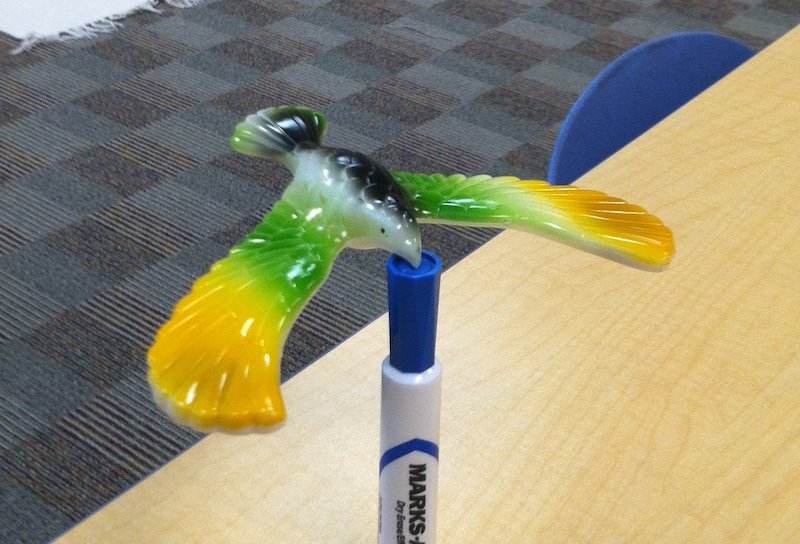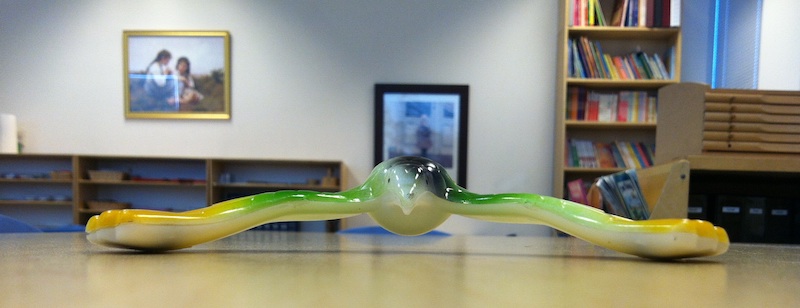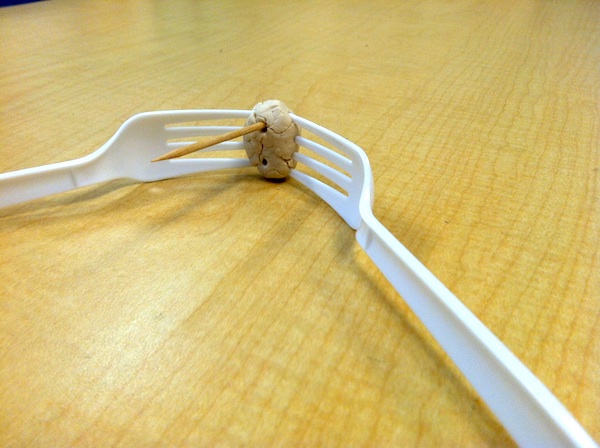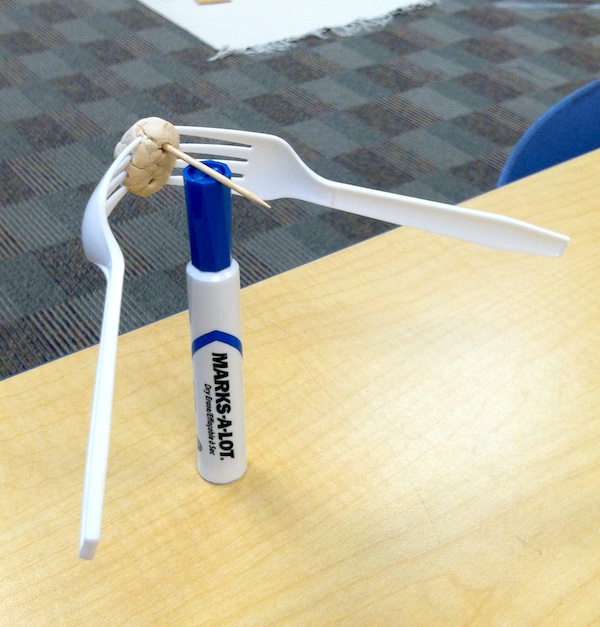Balance Toys
A variety of toys you can buy or make to explore balancing and center of gravity.
Science often begins with curious and puzzling things. One thing that children often seem to find very fun is playing with balancing toys — things that stand up when it seems like they should fall down. Take this toy “Balance Bird,” for example:

(I bought this one at the gift store of the Museum of Osteology in Oklahoma City — a fantastic museum, but that's another subject. You can find lots of these things for sale online if you go to Amazon and search for “balance bird.”)
Not only do these balancing toys not fall down, but if you bump them or tip them, they sway and swing and come back to where they started. They actually behave a lot more like something hanging than something standing. If you inspect the bird closely, you can discover why. The bird is mostly lightweight plastic, but there are heavy metal weights stored in the wing tips. And if you look closely, you see that the weights are actually lower than the point of support, i.e. the tip of the beak. The bird looks like it is standing on its beak, but as far as weight and gravity are concerned it is really hanging from its beak. The bird is playing a trick on the eye by hiding all of the weight in the slightly-lower wingtips.

If you want to make a similar toy from household objects, it is not that hard to do. The important thing is to keep most of the weight centered underneath the point of support, or in scientific terms, to have the center of gravity below the point of support. One way to do this is to jam two forks into a piece of clay or a piece of potato or something, and then insert a toothpick into the central blob a little bit above center.

The toy is to be suspended from the toothpick, somewhere in the middle. Notice that the forks are tilted backwards so that the tips of the forks are well behind the toothpick, thus balancing the toy front-to-back. You might have to experiment a little with the angle of the forks, and the weight of the lump, to find a happy balance. Also notice that the toothpick is off-center. It is above the centerline of the toy. This is necessary to place the point of support over the center of gravity, rather than under it. It is necessary for the same reason that the bird's wingtips were below its beak. But once you have found a happy balance, you should be able to hang or stand the top from a point somewhere in the middle of the toothpick.

The popular “Weebles” toys which wobble but don't fall down work in a similar, but slightly different way. (Well, they were popular when I was a child.) The bird has one single point where it always touches the support (i.e. the tip of the beak), and it “hangs” from that point. The Weebles roll. They “stand” on the lowest point of their bodies, and when you bump or tip them, they try to place their heavy bottoms as low as possible, but they do so by rolling rather than swinging. If you want to make your own “weeble”, you can buy some plastic Easter eggs, and tape or glue some coins or lead fishing weights or lead shot in one end.